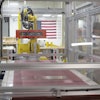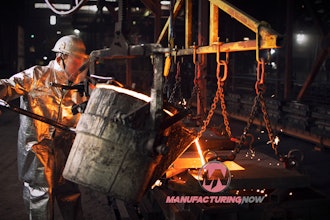Take Steps Now to Prevent a Rodent Infestation This Holiday Season
Winter is here, and as the days keep getting colder, it’s prime time for rodent infestations. Even relatively mild temperatures in the 50s can send rats and mice scurrying for shelter. These resourceful creatures will be looking for a warm place to spend the holidays, and lured by the promise of food, some might find it in your facility.
To food safety auditors, rodents are a clear hazard, and a rodent infestation can result in a significant penalty on your score. Rodents are known to carry a number of diseases – plague, typhus, Hantavirus and salmonella, just to name a few – so they can contaminate your product, causing liability issues, or even infecting your staff.
But the problems don’t stop there. Rodents also can cause physical damage to your facility. Mice and rats will gnaw holes through walls, and they love to chew through electrical wiring – the damage from which can be expensive to isolate and repair.
So how can you protect your facility from a rodent infestation this winter? Targeting and eliminating food and water sources, as well as the rodents’ ability to enter your building, will go a long way in making your facility less desirable to rodents in the first place.
Work with your pest management professional to complete the following rodent-prevention checklist this winter:
Rodent-Prevention Checklist
• Be Clean – Easily accessible food is a powerful attractant for rodents, so keep your facility and your machinery as free from food debris as possible. Pay special attention to the dumpster and trash cans around the exterior of your facility, as the odors they emit will signal the presence of food in and around the building. Dumpsters should be cleaned and rotated frequently, and trashcans should have secure, tight-fitting lids.
• Be Dry – Eliminate water sources around your building. Though mice can usually glean enough moisture from their daily food intake to survive, rats need an additional water source. Repair leaky HVAC units, which can provide enough moisture for a rat to survive, and clean up any liquid spills immediately.
• Be Inaccessible – Because rodents will most often enter your building through cracks and holes in the exterior (the general rule is if you can fit a pencil into a hole or crack, a rodent will be able to enter), seal all unintentional holes with weather-resistant sealant.
• Be Exposed – Vegetation growing alongside your building provides optimal cover for rodents to approach your facility. Since rodents avoid open exposure, trimming back vegetation from the side of the building and installing a gravel strip around the exterior can discourage them from getting too close to your facility.
If you think you might already have a rodent problem, contact your pest management professional immediately to help eliminate the infestation. Of course, the checklist above should be implemented even in the midst of an existing infestation to prevent further problems. If rodents haven’t decided to call your facility home yet, keep in mind the old saying, “An ounce of prevention is worth a pound of cure,” and rodent-proof your plant now.


















